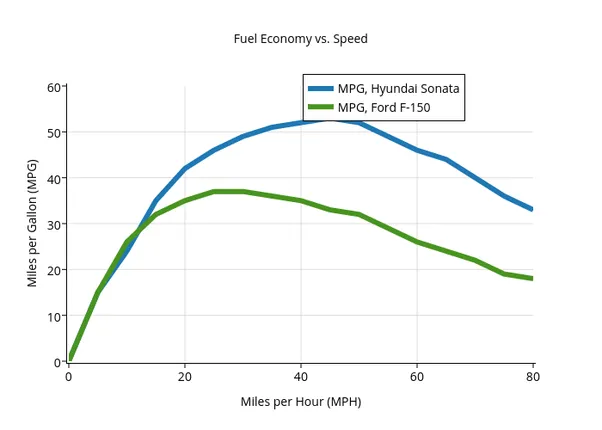These are typical shaped curves of fuel consumption (mpg) vs speed for a couple of vehicles. All vehicles have the characteristic hump in the middle. That tells you that driving a mid speed is best, too slow is inefficient and too fast in increasingly inefficient.
The reason why slow is bad is because the engine wants to turn 1000–3000 RPM and the gears will still be in low gear meaning that you are turning a lot of revs per mile so it burns more gas as gas is injected and burned on every rev.
At higher speeds the transmission has shifted to a higher gear so you still cruise at 1000–3000 RPM but your engine turns a lot fewer revs per mile traveled using less gas. BUT, The air resistance is low when you go slow, but goes up four times for every doubling of speed. So the engine has to work harder to overcome air resistance. That’s why the mileage goes down with speeds increasing eventually.
The sweet spot is usually between 30 and 50 mph, the wind resistance is not huge yet and the transmission has switched to a high gear giving good miles per rev. All but the most aerodynamic of cars starts to lose mileage significantly over 60–65 mph.
Notice the peak in the curve for the passenger car is higher speed than the peak for the pickup truck (Ford). One reason may be the gearing lower to pull bigger payloads but the other reason is that the taller boxy shape of the pickup truck vs. the more streamlined shape of the sedan will give lower wind resistance.
However, you will note that driving 10 mph and getting 5–10 mpg is going to be way worse on a 200 mile trip than going 90 mph and getting 10 mpg; at least you’ll get there 9 times faster: 20 hours vs 2.2 hours, with the same fuel economy
